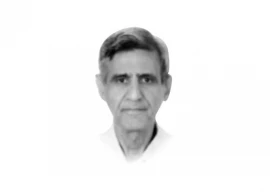
It is well documented that the process of urbanisation has a positive impact on a country’s economic growth and its evolution towards a modern industrial economy. The statistical conclusions of a recent report titled Opportunities in an Urbanising World by Credit Suisse, state that: “1) per capital GDP is generally superior in urban than rural populations; 2) developed economies have comparable rural and urban per capita GDP growth rates; 3) emerging economies exhibit superior urban versus rural per capital GDP growth rates; 4) there is evidence that the larger cities in a country have superior per capital GDP; 5) rapid urbanisation is usually associated with very swift economic expansion; and 6) most importantly — there is an urbanisation sweet spot (in the 30 per cent to 50 per cent [population urbanisation range]) accompanied by peak per capital GDP growth”.
The Credit Suisse report also asks another important question. Looking at the high urbanisation but low GDP per capital in countries in South America and comparing them to the high urbanisation and high GDP per capital of the G7 countries, it asks why some regions urbanise less successfully than others? The answer is striking.
The clue lies in the disproportionate distribution of income in urbanised but lesser-developed countries. The report identified six large emerging markets and found that Korea, Malaysia and Turkey urbanised while, for the most part, their Gini coefficients declined (improving equality of income distribution), while Brazil, Mexico and South Africa urbanised while, for the most part, their Gini coefficients rose (deteriorating equality of income distribution). In other words, urbanisation coupled with misallocation of resources will hinder economic development and the growth of GDP.
With at least 35 per cent of its population residing in urban areas, Pakistan is the most urbanised country in South Asia. Covering no more than three per cent of the country’s landmass, urban areas contribute towards 78 per cent of the GDP. It is undeniable that the Pakistani economy is an urban economy. Urban areas in Pakistan also present better development indicators: incomes are generally higher, there are better schools and hospitals and there also exist urban consumer facilities that are unavailable elsewhere.
In the next three decades, the urban population of Pakistan is expected to exceed 50 per cent of the total population. At the same time, the total population is expected to cross 300 million. This huge shift of people and massive transformation of our society, is also an excellent opportunity to harness the economic potential of urbanisation and to ensure that wealth generated by this process is equitably distributed for the benefit of the public.
The Credit Suisse report identified challenges that governments of rapidly urbanising countries like Pakistan’s, will need to address to ensure that their growth potential is unlocked. These include investment in urban planning and infrastructure that ensures access to capital markets, land use controls and zoning that promote high density human interaction while providing affordable housing; provision of adequate fresh water, sewerage and drainage, electricity and other utilities; effective urban management; and social programs that redistribute incomes across the population and “avoid the failure of urban disintegration between affluent areas and slums”.
The Planning Commission of Pakistan has been given similar recommendations by its Task Force on Urban Development and smarter urban development and planning is at the heart of its new Framework for Economic Growth.
The provincial governments must now fulfill their obligations to devolve power to local governments and, in doing so, ensure that their cities develop in a manner that promotes, rather than hampers growth. The urban areas in Pakistan are now characterised by their degraded environment, air pollution, poor drinking water quality, lack of mobility and public transport, opaque property markets, and arcane building codes that encourage state occupation of land and discourage high density development. In their present state, Pakistani cities cannot hope to attract the human talent necessary to support a vibrant urban economy. And it is human talent — as New York’s mayor Michael Bloomberg recently tweeted — that attracts capital, rather than capital attracting talent. And that is the secret of unlocking Pakistan’s urban economy.
Published in The Express Tribune, April 12th, 2012.














COMMENTS
Comments are moderated and generally will be posted if they are on-topic and not abusive.
For more information, please see our Comments FAQ